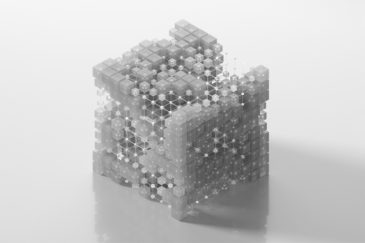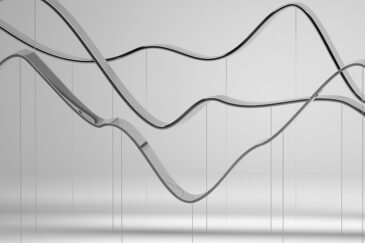Adam Brazier joined the Cornell Center for Advanced Computing in 2014 and is a member of the Consulting Group. He has been working in research at Cornell since 2005, first as a Research Associate in the Astronomy Department, and then as an Astronomy Programmer at the National Astronomy and Ionosphere Center and latterly Science Software Architect for the CCAT Telescope project. With a focus on the computational and data-intensive aspects of research at all stages of the research life cycle, Adam is a member of the international North American Nanohertz Observatory for Gravitational Waves (NANOGrav) and the PALFA pulsar survey collaboration.

Data Science With SQL
and TableauCornell Certificate Program
Request More Info
Overview and Courses
Proficiency in structured query language (SQL) is fundamental for anyone working with data. Used in organizations large and small, learning SQL will prepare you to quickly query raw data and transform it into meaningful visualizations using tools like Tableau to help you make business decisions.
This certificate program is designed to help you analyze data in a relational database and develop your understanding of the relationship between SQL and data visualizations. You will use SQL and fundamental database concepts to create a normalized database, manipulate the data within the database, and extract the data from the database, discovering how to convert business questions into SQL queries that extract answers from your data.
After developing your skills working with databases, you will take raw data and create robust data visualizations using Tableau. You’ll explore a wide variety of charts and learn how to select the best chart to convey the meaning in your data. This combination of being able to both work with and present data to key stakeholders will prepare you to bring value to any data-centric organization.
You will be most successful in this program if you have an understanding of basic statistical concepts.
The courses in this certificate program are required to be completed in the order that they appear.Course list
Data drives many real-world endeavors, which means that storing and accessing the data is foundational to success. Relational databases are an industry-standard data storage mechanism for maintaining data integrity while allowing flexible data retrieval.
You will begin this course by examining the basic table structures that form a relational database. Using the relational database format, you will define connections between your data fields and determine how those can be expressed. You will then practice normalizing a relational database to ensure data integrity and reduce redundancy. As this course concludes, you will use a relational database system called OmniDB along with structured query language (SQL) to retrieve specific information from the database.
- Oct 29, 2025
- Nov 12, 2025
- Nov 26, 2025
- Dec 10, 2025
- Dec 24, 2025
- Jan 7, 2026
- Jan 21, 2026
Relational databases are workhorses which form the backbone for much of the information we find at our fingertips on the internet. In this course, you will learn to create and modify databases using OmniDB and structured query language (SQL) to import data, create tables, and modify fields. You will also practice cleaning data to maintain your database and ensure that it provides accurate information. As the course progresses, you will identify questions you want answered and practice translating those questions into SQL. You will also examine different forms of outputting data from a database, including outputting to a program or text file and outputting CSV text.
You are required to have completed the following course or have equivalent experience before taking this course:
- Querying Relational Databases
- Oct 15, 2025
- Oct 29, 2025
- Nov 12, 2025
- Nov 26, 2025
- Dec 10, 2025
- Dec 24, 2025
- Jan 7, 2026
- Oct 15, 2025
- Oct 29, 2025
- Nov 12, 2025
- Nov 26, 2025
- Dec 10, 2025
- Dec 24, 2025
- Jan 7, 2026
After creating an initial version of a chart, how do you make it better? In this course, we'll explore the process for creating great charts. First, you'll explore how best to plan and draft your chart. Then, you'll need to eliminate distractions in the chart to make your visualization clear. It's also important to emphasize the most critical data in your chart. We'll look at how our brains process visualizations, and how you can use this information to better design your chart. Lastly, we'll examine how to adjust a chart to target your audience and the iterative process you can use to improve it.
You are required to have completed the following course or have equivalent experience before taking this course:
- Creating Data Visualizations with Tableau
- Oct 15, 2025
- Oct 29, 2025
- Nov 12, 2025
- Nov 26, 2025
- Dec 10, 2025
- Dec 24, 2025
- Jan 7, 2026
In this course, we will study how you can make a set of charts in Tableau that tell a story to help your audience understand and remember your message. We'll also talk about different approaches to handling technical or complicated content and techniques for getting feedback so that you can improve your presentation.
You are required to have completed the following courses or have equivalent experience before taking this course:
- Creating Data Visualizations with Tableau
- Enhancing Data Visualizations with Tableau
- Oct 15, 2025
- Oct 29, 2025
- Nov 12, 2025
- Nov 26, 2025
- Dec 10, 2025
- Dec 24, 2025
- Jan 7, 2026
Request more Info by completing the form below.
How It Works
- View slide #1
- View slide #2
- View slide #3
- View slide #4
- View slide #5
- View slide #6
- View slide #7
- View slide #8
- View slide #9
Faculty Authors
Ben Trumbore joined the Cornell Center for Advanced Computing in 2016 as a member of the Consulting Group. He previously spent 14 years at Cornell as an image synthesis researcher in the Computer Graphics program. Mr. Trumbore also has 14 years of industrial experience developing commercial-quality software. With Autodesk, he developed graphical user interfaces and architected data formats for use in several geographic information system (GIS) products. At Advion, Mr. Trumbore wrote low-level and user interface software to control an innovative, compact mass spectrometer.
Key Course Takeaways
- Write SQL queries for a relational database
- Manipulate data in a relational database using SQL
- Create visualizations that transform raw data into actionable information that drives decisions
- Improve data visualizations to ensure they resonate with the target audience
- Tell a compelling story with your data to gain stakeholder buy-in

Download a Brochure
Not ready to enroll but want to learn more? Download the certificate brochure to review program details.

What You'll Earn
- Data Science With SQL and Tableau Certificate from Cornell University Center for Advanced Computing
- 50 Professional Development Hours (5 CEUs)
- 50 PD hours towards IIBA's core certification program OR 50 CDUS towards IIBA's recertification
Watch the Video
Who Should Enroll
- Data scientists
- Business analysts
- Developers
- Professionals who work with databases or data warehouses
- Marketing analysts
- Career starters
Explore Related Programs
Request Information Now by completing the form below.

Data Science With SQL and Tableau
| Select Payment Method | Cost |
|---|---|
| $3,900 | |





























